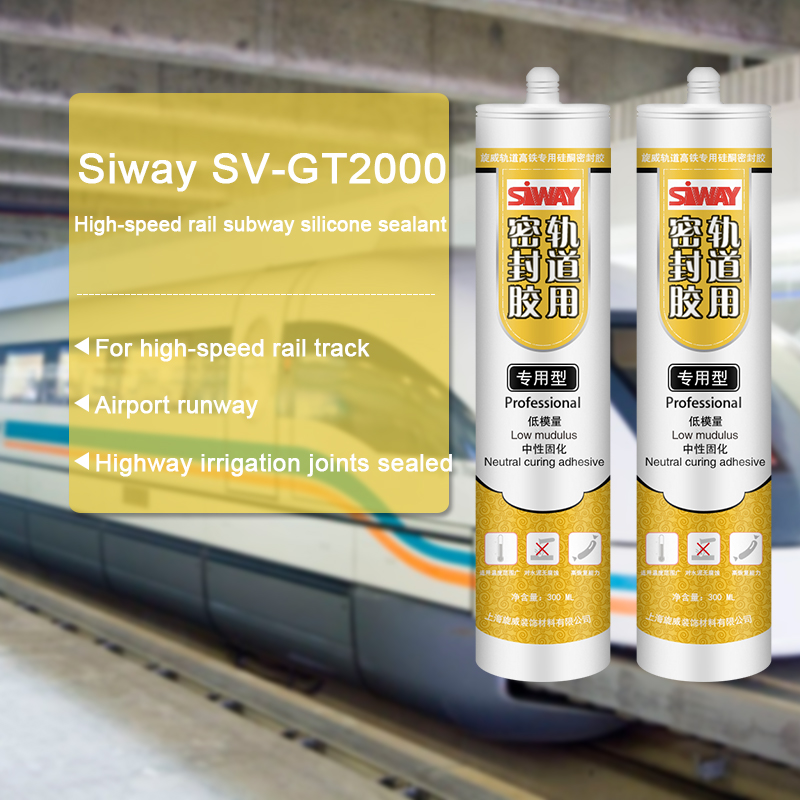Manufactur standard SV-8890 Two-component Silicone Structural Glazing Sealant Wholesale to Vancouver
Short Description:
Description SV8890 is neutral curing, designed for glass, stone, marble, granite, aluminum curtain wall and glass daylighting roof and metal structural engineering structural adhesive seal designed silicone sealant structure, excellent bonding performance of structure and the weathering resistance, after artificial accelerated weathering test, various physical and chemical properties have no obvious change in the sealant. When using, SV8890 with dedicated two-component glue machine constructi...
We strive for excellence, service the customers", hopes to become the best cooperation team and dominator enterprise for personnel, suppliers and customers, realizes value share and continuous promotion for Manufactur standard SV-8890 Two-component Silicone Structural Glazing Sealant Wholesale to Vancouver, Our professional technical team will be wholeheartedly at your service. We sincerely welcome you to visit our website and company and send us your inquiry.
Description
SV8890 is neutral curing, designed for glass, stone, marble, granite, aluminum curtain wall and glass daylighting roof and metal structural engineering structural adhesive seal designed silicone sealant structure, excellent bonding performance of structure and the weathering resistance, after artificial accelerated weathering test, various physical and chemical properties have no obvious change in the sealant. When using, SV8890 with dedicated two-component glue machine construction, two kinds of components in accordance with the provisions, mixing ratio after curing form elastomer.
Key Features
1. None sag
2. Adjustable working time
3. Excellent adhesion to most building substrates
4. High bonding strength and modulus
5.12.5%movement capability
6. Silicone durability
Basic Application
1.Glass, stone, marble, granite, aluminum curtain wall and glass daylighting roof and metal structural engineering structural adhesive seal;
2.Insulating Glass of the second seal
3.Many other building and industrial applications
Technical data sheet
| Test project | Unit | value |
| Flow, sagging or vertical flow | mm | 0 |
| Operating time | min | 20 |
| surface drying time(25℃,50%R.H.) | min | 40-60 |
| Durometer Hardness | Shore A | 20-60 |
| At 23 ℃ maximum tensile strength elongation | % | ≥100 |
| Tensile strength(23℃) | Mpa | 0.9 |
| Tensile strength(90℃) | Mpa | 0.68 |
| Tensile strength(-30℃) | Mpa | 0.68 |
| Tensile strength(flooding) | Mpa | 0.68 |
| Tensile strength(flooding – ultraviolet) | Mpa | 0.68 |
| Bond damage area | % | 5 |
| Thermal aging(thermal weight loss) | % | ≤5 |
| Thermal aging(crack) | No | |
| Thermal aging(efflorescence) | No |
Certification
GB 16776
Color
Component A(Base) – White, Component B(Catalyst)- Black
Package
1. Component A(Base): (190L), Component B(Catalyst) (18.5L)
2. Component A(Base):24.5kg (18L), Component B(Catalyst): 1.9kg (1.8L)
Shelf life
12 months
Note
If you want the TDS or MSDS or other details, please contact with our sales person.
PHIL SWIFT ANNOUNCES A BRAND NEW REVOLUTIONARY PRODUCT, FLEX VAPE!
Other related videos:
How to strip and repair tap gland-seal
How to stop a monobloc tap outlet leaking (emergency repair)
Earlier today I noticed some water on the floor near the kitchen sink so opened the unit and saw a bit of a leak from the main stopcock that controls flow of water from rising main into the house. Water was dripping from the gland seal. Unfortunately since this is the main way of turning off the water supply* I couldn’t isolate the actual stopcock which ironically is the isolating valve for the cold water supply. So as this was an emergency repair I had to use PTFE tape which is a product that everyone should have in their toolkit.
Anyway – to carry out emergency repair;
Turn off the stopcock and remove handle by unscrewing the cross-head screw in the end of shaft.
Loosen off the gland seal retainer collar. The leak will worsen so put some old rags around it to mop up spills.
Try to extract the old gland packing which is either rubber, fibre or leather. If the tap is in awkward place or the old seal is rock hard and too tight to remove, you then have to wrap several turns of PTFE tape around the shaft as near to the gland seal as possible.
Now using a flat screwdriver and carefully push the tape right down into the gland seal (or what’s left of it)
Now install the gland seal retainer collar and tighten it up.
Now turn on the stopcock or tap/faucet and check for leaks. Ideally the old seal/packing is removed first but in the real world that sometimes doesn’t happen. If there’s still no leaks after a few hours then chances are you’ve fixed the problem. This is a ‘temporary repair’ so ultimately you will have to fit a new stopcock/tap/valve at some point. A useful tip is to regularly cycle any water supply valves, taps etc fully open and closed to keep them from sticking open or shut. Do this twice a year. Taps tend to seize more when they are fully open so it’s good practice to open them fully then back them off half a turn so the internal valve seat isn’t hard against the end stops.
*If the main water supply stop valve is leaking you’ll either need a pipe freezing kit or hope there is a main water supply cut-off along with the water meter or supply from the mains water. Worth making a note of where the stopcocks and other valves are located on your property.




